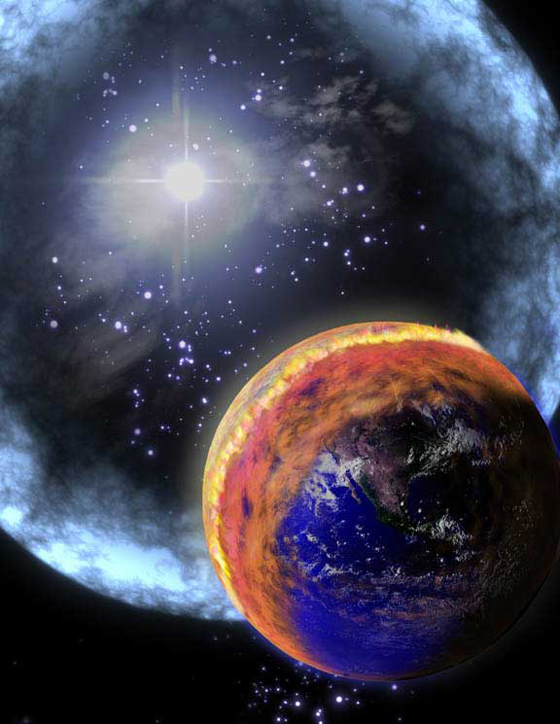A recent preprint which confirms the earlier work of James Annis [available here on the arXiv]:
On the role of GRBs on life extinction in the Universe
Tsvi Piran, Raul Jimenez
(Submitted on 8 Sep 2014)
As a copious source of gamma-rays, a nearby Galactic Gamma-Ray Burst (GRB) can be a threat to life. Using recent determinations of the rate of GRBs, their luminosity function and properties of their host galaxies, we estimate the probability that a life-threatening (lethal) GRB would take place. Amongst the different kinds of GRBs, long ones are most dangerous. There is a very good chance (but no certainty) that at least one lethal GRB took place during the past 5 Gyr close enough to Earth as to significantly damage life. There is a 50% chance that such a lethal GRB took place during the last 500 Myr causing one of the major mass extinction events. Assuming that a similar level of radiation would be lethal to life on other exoplanets hosting life, we explore the potential effects of GRBs to life elsewhere in the Galaxy and the Universe. We find that the probability of a lethal GRB is much larger in the inner Milky Way (95% within a radius of 4 kpc from the galactic center), making it inhospitable to life. Only at the outskirts of the Milky Way, at more than 10 kpc from the galactic center, this probability drops below 50%. When considering the Universe as a whole, the safest environments for life (similar to the one on Earth) are the lowest density regions in the outskirts of large galaxies and life can exist in only ~ 10% of galaxies. Remarkably, a cosmological constant is essential for such systems to exist. Furthermore, because of both the higher GRB rate and galaxies being smaller, life as it exists on Earth could not take place at z>0.5. Early life forms must have been much more resilient to radiation.
That “z>0.5” is a date, which is model-dependent. Using Ned Wright’s Cosmology Calculator, with the current parameters of the cosmos, the date is 5.093 Gya, not long before the formation of the Solar System c.4.57 Gya. As the abstract discusses, the odds are pretty good that Life on Earth has taken at least one hit from a major Gamma-Ray Burst. Fortunately (?) it was probably aeons ago, before complex Life had evolved. Or did it end Complex Life once before? Is current animal life a Second Genesis? There are trails in mud from the Archean which look like worm-trails from the Cambrian. Could Life on Earth have had its evolution clock ‘reset’?
As an interesting coincidence, if we use the red-shift age relation of Fulvio Melia’s Rh = c.t Cosmology, which is t = Rh/c*(1/(1+z)), then the age at z = 0.5 is 2/3 the Cosmic Age, or just 4.57 Gya…

